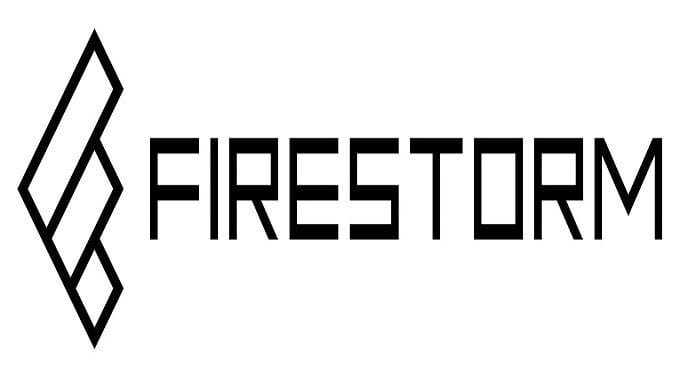The Future of Defense Tech Starts Here. Subscribe to get exclusive insights on emerging warfare tech, cutting-edge startups, and the evolving defense industrial base—delivered straight to your inbox.
Editor’s Brief
Last week’s profile of Rebellion Defense contained potentially outdated product and leadership details. We’re verifying updates and will publish corrections as soon as we receive them. Thank you to those who reached out—your feedback helps ensure accuracy.
As we continue covering defense tech, startups, and procurement, we’re seeking expert contributors—public or anonymous. If you're a former program manager, acquisitions expert, defense operator, or technologist with insights, we’d love to hear from you. Even quick fact-checks help us deliver sharper analysis. Reply to this email or reach out directly—your perspective is invaluable.
This week, we turn our focus to Firestorm Labs and their revolutionary approach to UAS manufacturing at the tactical edge.

SIGNAL BRIEF: Firestorm Labs - Reinventing Defense Manufacturing at the Tactical Edge
Firestorm Labs is transforming defense manufacturing with 3D-printed drones and expeditionary production capabilities that collapse traditional acquisition timelines from years to hours. Their innovative approach—producing military-grade UAS directly at the point of need—addresses one of DoD's most critical vulnerabilities: contested logistics.
Origins & Vision
Founded in 2022 by Dan Magy (previously of Citadel Defense, acquired by BlueHalo), Chad McCoy, and Ian Muceus, Firestorm emerged to solve a fundamental problem: how to maintain combat capability when traditional supply chains become a liability.
Rather than relying on centralized defense production, Firestorm prioritizes distributed manufacturing and modular design. This allows for the production of complete, mission-capable drones in hours rather than months, revolutionizing how military capabilities are delivered.
As adversaries increasingly target logistics hubs, defense leaders need to recognize the strategic advantage of point-of-need manufacturing—a gap Firestorm is addressing with its xCell manufacturing platform and Tempest drone system.
Key Takeaways:
Procurement Disruption Ahead? If Firestorm proves its model, expect more DoD contracts to shift toward distributed, in-theater production—reshaping procurement for startups and primes alike.
Manufacturing Paradigm Shift: Firestorm’s claimed 36-hour production cycle challenges conventional sustainment models and could redefine battlefield logistics.
Contested Logistics Breakthrough? If widely adopted, this could allow forward-deployed units to manufacture drones on demand, reducing dependency on long supply chains.
Force Structure Implications: If successful, this approach may influence how services organize expeditionary units and equipment requirements, driving a shift in deployment strategy.
Tech Radar: Firestorm’s Manufacturing Platform
Tempest 50 – Rapidly Manufactured Tactical UAS
The Tempest 50 is Firestorm's flagship drone platform. The company claims it can be 3D printed in nine hours and fully assembled in 36 hours, though full mission readiness depends on configuration and testing. Its modular architecture enables field reconfiguration for different missions.
Key Capabilities:
Field Configurability – Quick-connect assembly for rapid mission adaptation
Mission Adaptability – Open architecture supporting various payloads
Flexible Propulsion – Swappable propulsion options (electric/jet) under development
Multiple Deployment Options – Versatile launch and recovery methods
Modular Transport – Disassembles for single-person carry
xCell – Expeditionary Manufacturing System
The xCell is Firestorm's deployable micro-factory, housed in a shipping container. It allows drones to be built in-theater with minimal personnel, even operating off-grid with generator power.
Key Capabilities:
Advanced 3D Printing – Aerospace-grade components produced on demand
Modular Assembly Station – Standardized workspace for rapid integration
Digital Blueprint Library – Secure repository of drone designs
Supply Cache – Onboard storage of critical non-printable components
Market & Career Signals
Contracts & Government Traction
Firestorm has secured multiple defense contracts, including
$100M Air Force SBIR Phase III IDIQ (up to 7-year duration, through 2031)
$1.2M SBIR Phase II for expeditionary manufacturing R&D
Selection for EWAAC IDIQ (Air Force munitions innovation pipeline)
PY25.1 STRATFI funding (announced 10 March 2025) to advance modular unmanned aerial systems
While the $100M IDIQ enables the Air Force to place future orders, only minimal funds were initially obligated, meaning large-scale adoption is still in early stages. The March 10 STRATFI award provides a major boost, accelerating Firestorm’s efforts to scale its 3D-printed modular UAS, Air Launched Effects (ALE), and expeditionary manufacturing capabilities.
Funding & Growth
Firestorm has attracted significant venture capital to scale its approach:
Total Funding: ~$40M+ across equity and non-dilutive sources
Latest Round: ~$20M Series A (late 2024)
Notable Investors: Lockheed Martin Ventures, Decisive Point, Red Cat Holdings
Valuation: Likely higher than the $35M reported in early 2024
Impact for Defense Professionals
For program managers and operational planners, Firestorm’s approach could redefine how attrition and replacement rates are managed. Instead of relying on slow, centralized supply chains, this model sustains operational capability at the tactical edge through on-demand manufacturing.
This shift aligns with what Magy identifies as a fundamental requirement for future warfare:
We are not going to be able to fight a war if we're building dozens of platforms a month. We need to be in the hundreds or thousands of platforms a month and it is possible and it can be done cheaper than how we're doing it right now. But it's up to people in the DOD
Yet, the DoD has long struggled to integrate rapid, venture-backed innovations. Firestorm presents both a massive opportunity and a logistical challenge, demanding expertise in additive manufacturing, battlefield sustainment, and procurement reform to scale autonomous systems effectively.
For acquisition professionals, this model could force a fundamental rethink of how the DoD procures and fields unmanned systems. If Firestorm delivers, the Pentagon must shift from centralized production to localized, on-demand manufacturing—reshaping budgeting, sustainment, and force design.
This transition won’t be easy. Bureaucratic inertia, outdated procurement structures, and concerns over additive manufacturing quality could slow adoption unless defense leaders push for change. But if successful, Firestorm’s model could revolutionize the DoD’s ability to scale production in real time, bridging the gap between commercial innovation and warfighter needs.
Looking Ahead
Firestorm’s concept is ambitious—disruptive even—but scaling from prototype to battlefield deployment remains the biggest hurdle for defense startups. Its approach to low-cost, mass-produced UAS could redefine tactical drone production, much like HIMARS reshaped precision strikes. Yet, DoD adoption is notoriously slow, especially when it challenges entrenched procurement models.
A March 6, 2025 DoD memo may signal a shift. By making the Software Acquisition Pathway (SWP) the default for software-driven weapons and streamlining procurement through Commercial Solutions Openings (CSOs) and Other Transactions (OTs), the Pentagon is creating faster pathways for startups like Firestorm. If the company can prove battlefield impact at scale, these changes could provide a clearer route to adoption and funding.
But policy shifts must translate into real procurement reform. Without execution, Firestorm risks becoming another unrealized innovation.
Challenges Firestorm Faces
Material limitations: 3D-printed polymers must match traditional aerospace standards.
Security concerns: Digital blueprint distribution introduces cyber risks that adversaries could exploit.
Acquisition friction: DoD procurement models must evolve to accommodate rapid, on-demand production.
The Bottom Line
Firestorm is actively positioning itself for broader adoption, including expansion to Washington, DC, to strengthen DoD engagement. But as Magy warns, venture funding alone won’t sustain defense innovation indefinitely—procurement and fielding must accelerate.
The company’s vision aligns with DoD’s shift toward mass-producible, adaptable UAS, and the SWP memo signals policy alignment. Now, execution is what matters. The next year will determine whether Firestorm’s model scales from concept to battlefield reality—or becomes another cautionary tale of defense innovation lost in bureaucracy.
What types of defense tech companies do you to read about?
Stay Ahead of Defense Innovation! 🚀
Don’t miss the latest insights on emerging military technology and defense industry trends.
